Are you looking for bathroom tile design ideas? Today we don’t only give you design ideas for your bathroom but also some tips to help you create a gorgeous, relaxing bathroom. Let’s take a look!
When Space is Limited, Go for Light
The color of the tiles in your bathroom can really give a major impact in a tiny bathroom. A lot of people go for light hues including light grey, cream, and white even though there are many small bathrooms still look great with shades that are darker. Neutral colors can be the solution to keep the room’s tone calm and relaxing that is really needed in tinier rooms. Opt for a neutral color for your bathroom’s tiles and it will give you the illusion of more areas. It can be also as an extra advantage for potential buyers if someday you want to sell the house.
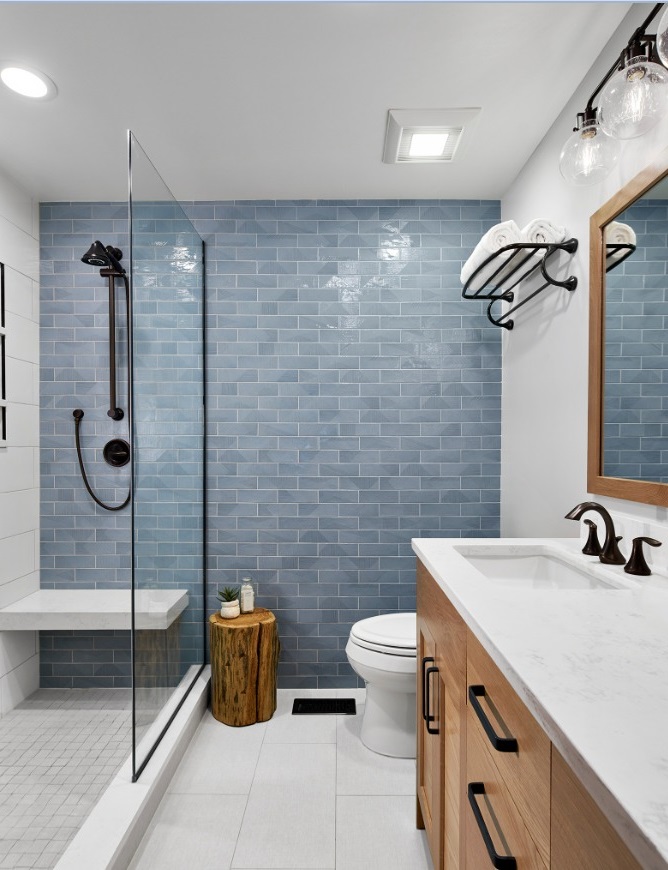
Small or Big is Ace When it Comes Short on Area
The tile sizes of your bathroom are starting from small mosaic tiles to massive gigantic tiles that can reach different meters length. It is not a great idea to use meter long, massive tiles in many tiny bathrooms since the tile will get cut off in a lot of amounts. And when it happens, it will interrupt the style or pattern as well as creating tons of waste even though there are no rules applied. So, it is up to you which one you choose for your bathroom’s tiles.
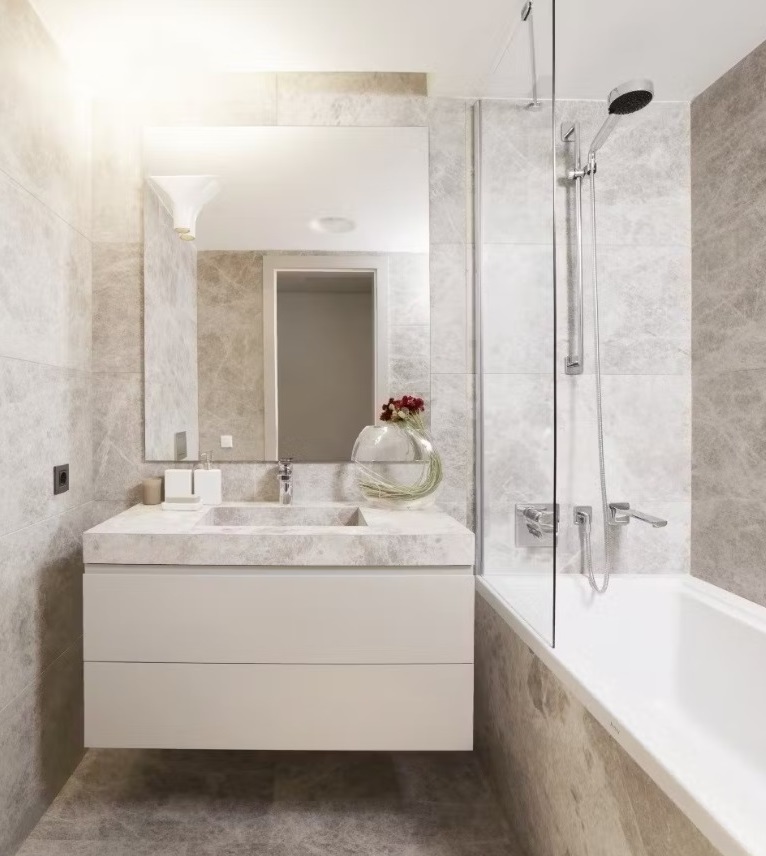
On the other hand, big tiles for a bathroom which is usually 30 to 60 cm can give a relaxing feeling that is perfect for bathrooms with tight space. If you want to use medium or big-sized tiles, you should consider applying the square shapes in neutral colors like grey or white. Other choices to think with larger tiles are rectangular-shaped tiles. There are still many choices to pick to allow you to get the right style and a variety patterns tiling can help you beautify the room.
Patterned Tiles for More Style
Tiles in a pattern for your bathroom can add more complicated nuances in a small bathroom. It will also make the bathroom looks cluttered. So, it is suggested to be more careful in using patterned tiles. One of the simplest tiling designs for a small bathroom is cloakrooms or en-suites in order to have a wall feature with the beautifully patterned tiles.
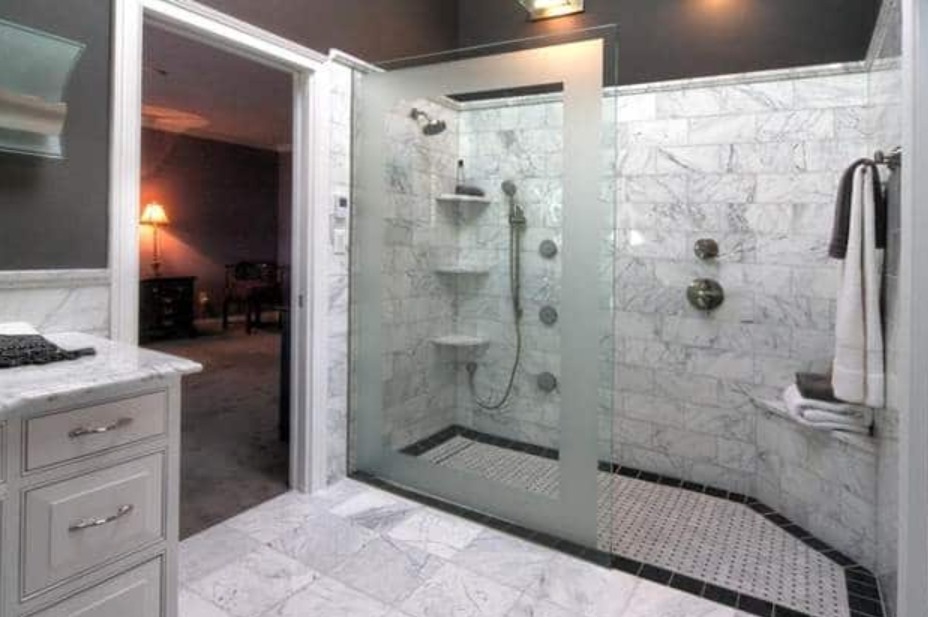
We hope those bathroom tile design ideas and tips can help you imagine the perfect bathroom design. Share your inspirations with us and happy decorating!
Ceramic Tiles Throughout History: From Pottery to the Modern Tile Manufacturing Industry
Ceramic tiles have a long and captivating history, progressing from their origins as handmade pottery to becoming a thriving modern industry. This article will guide you through time, exploring the beginnings, growth, and advancements that have shaped the ceramic tile industry into what it is today. Ceramic tiles, with their versatility and durability, represent a remarkable fusion of skill and practicality. These tiles are created from a mixture of clay, minerals, and water, forming a resilient material that is suitable for both flooring and wall coverings. The extensive history of ceramic tiles spans thousands of years, tracing its roots to ancient civilizations.
Early Origins: Pottery and Earthenware
The tale of ceramic tiles commences with the emergence of pottery. Ancient civilizations, such as the Egyptians, Mesopotamians, and Chinese, crafted basic clay vessels and tiles. These tiles were simple in design and primarily used for functional purposes.
The Magnificent Era of Mosaics
The art of crafting tiles was perfected by the ancient Romans. They introduced vibrant, intricate mosaic patterns adorning floors, walls, and even bathhouses. These mosaics displayed exceptional craftsmanship and artistic expression.
The Renaissance of Tile Making
During the Renaissance period, there was a surge in the demand for decorative tiles. In Europe, artisans rediscovered the methods of producing intricately hand-painted ceramic tiles. These tiles adorned the palaces and churches of the time, adding elegance and charm to interiors.
Evolution of Tile Manufacturing
The ceramic tile industry underwent significant changes during the Industrial Revolution. Innovations in technology and production processes led to mass manufacturing and widespread availability.
The Role of Industrialization
Industrialization in the 19th century revolutionized tile production. The development of kilns capable of firing tiles at high temperatures led to the creation of more durable and adaptable products, signifying the shift from handmade to machine-made tiles.
Advancements in Glazing
The 20th century saw breakthroughs in glazing techniques. This advancement enabled a broader range of colors and designs, making ceramic tiles even more appealing for use in both residential and commercial spaces.
Digital Printing Revolution
In recent years, digital printing technology has revolutionized the ceramic tile industry. This innovation enables manufacturers to replicate intricate patterns and designs with astonishing precision. It has also reduced waste and increased customization options.
Modern Ceramic Tile Industry
Today, the ceramic tile industry is a global powerhouse that meets diverse needs, from practical flooring solutions to artistic expressions.
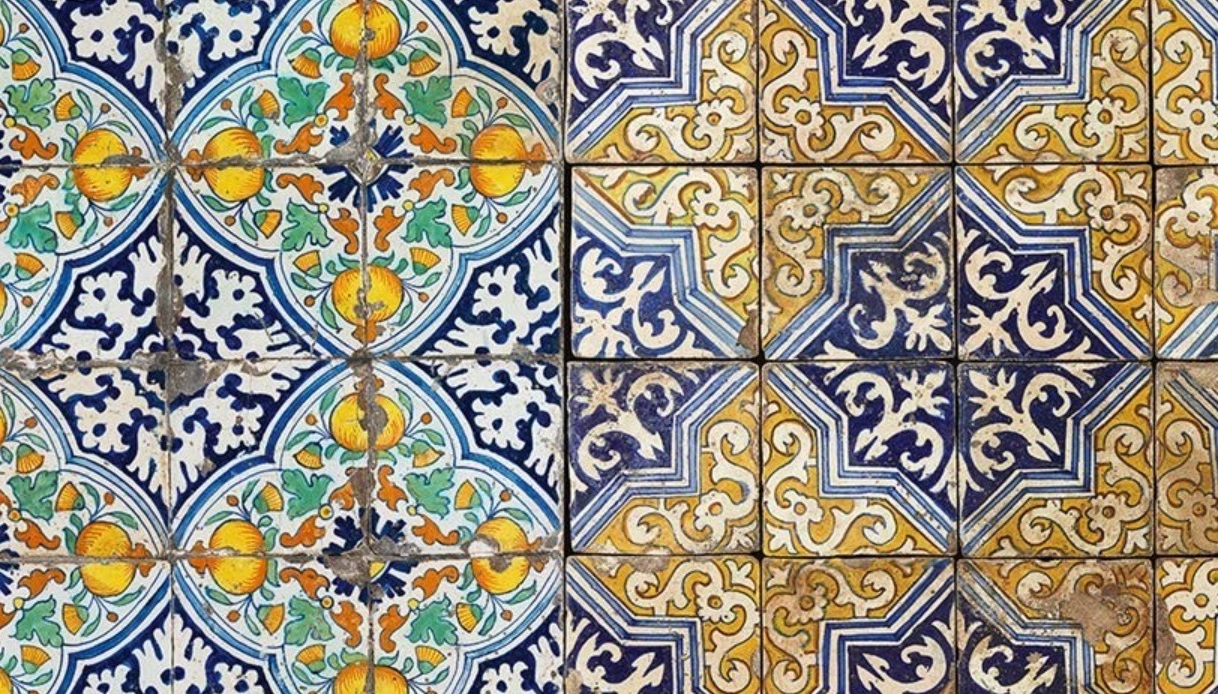
Sustainable Practices
With the increasing awareness of environmental impact, the industry has embraced sustainable practices. The use of recycled materials, energy-efficient kilns, and reduced water consumption is becoming increasingly prevalent.
Versatility and Design
Ceramic tiles now come in a variety of styles, sizes, and finishes. They can mimic natural stone, wood, or even metal, offering endless possibilities for interior and exterior design.
Global Influence
The ceramic tile industry has a significant global presence, with manufacturing centers in Europe, Asia, and the Americas. The global presence of quality tiles ensures accessibility worldwide.
Ceramic Evolution Timeline
Here’s a concise timeline of the history of ceramic tiles, highlighting significant milestones and advancements:
The earliest known ceramic tiles emerged in Mesopotamia, crafted for practical use in buildings. The earliest evidence of ceramic tiles can be traced back to the ancient cradle of civilization, Mesopotamia. In this fertile land between the Tigris and Euphrates rivers, dating back thousands of years, early artisans embarked on a journey of discovery. These innovative individuals recognized the potential of clay, minerals, and water as fundamental components for creating something exceptional. Taking a pragmatic approach, they began shaping and firing these raw materials into tiles intended for practical use. These early ceramic tiles weren’t just functional; they were also a testament to human adaptability and resourcefulness. Ceramic tiles played a vital role in constructing buildings, contributing to the creation of resilient surfaces designed to withstand the test of time. This humble beginning marked the inception of ceramic tiles, setting the stage for a remarkable evolution that would unfold over the centuries. From their rudimentary origins in Mesopotamia, ceramic tiles evolved into elaborate pieces of art and functional marvels, leaving an enduring impact on the history of architecture and design.
Ancient Egypt (c. 4,000 BCE):
The use of ceramic tiles in both functional and decorative capacities began in ancient Egypt, around 4,000 BCE. Egyptians, known for their architectural and artistic achievements, made significant contributions to the history of ceramic tiles. In their flourishing civilization along the Nile River, ceramic tiles emerged as a versatile and invaluable material. For the Egyptians, ceramic tiles served dual purposes – they were both functional and highly decorative. The innovative artisans understood that ceramic tiles could enhance the visual appeal of their structures while also offering practical advantages. Ceramic tiles proved to be an ideal choice for the Egyptians due to their functionality. They extensively used them in building construction, especially in areas that required durable and moisture-resistant surfaces. These tiles adorned Egyptian homes and temples, offering protection against the harsh desert climate and the annual flooding of the Nile. Going beyond their actionable functions, the Egyptians elevated ceramic penstocks to an art cast. They displayed an unparalleled mastery of tile craftsmanship, adorning their architectural wonders with intricate and colorful tile mosaics that depicted scenes from daily life, mythology, and religious rituals. The Egyptian approach to ceramic tiles underscored a remarkable combination of functionality and artistic expression. Their use of ceramic tiles not only enhanced the structural integrity of their buildings but also left behind a rich legacy of artistry that continues to captivate and inspire us today.
Roman Artistry (c. 100 BCE – 400 CE):
During their reign, the Romans left an indelible mark on the history of ceramic tiles by elevating tile craftsmanship and creating intricate mosaic designs for their villas, bathhouses, and public spaces. The Romans, renowned for their architectural grandeur and artistic finesse, made significant contributions to the history of ceramic tiles. In their expansive empire, the Roman civilization embraced ceramic tiles as a means to enhance the aesthetics of their structures. The potential of mosaic designs to bring about significant change was acknowledged, and they were extensively utilized in various settings. One of the most striking applications of Roman mosaic tiles was in their opulent villas, where luxurious residences showcased the Romans’ penchant for intricate patterns and vibrant colors. Intricate scenes, geometric shapes, and elaborate motifs brought life to floors and walls, reflecting the Roman admiration for beauty and skill. Roman bathhouses, epitomes of communal luxury and relaxation, also showcased the mastery of tile craftsmanship, with mosaics adorning the floors and walls, creating an atmosphere of opulence and indulgence. The Romans’ love for mosaic tiles not only enhanced their architectural surroundings but also showcased their cultural values. Today, the remnants of these mosaic masterpieces serve as a vivid testament to the sophistication and creativity of Roman civilization.
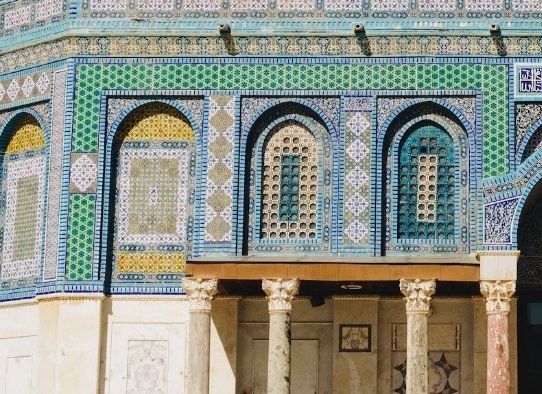
Medieval Europe (c. 5th – 15th century):
During the medieval period in Europe, skilled artisans produced hand-painted decorative tiles that often adorned the interiors of churches and castles, leaving an indelible mark on the era’s architectural landscape. Medieval artisans in Europe embarked on a creative journey that added a unique and artistic touch to architectural marvels. These artisans were instrumental in the production of hand-painted decorative tiles, which went on to grace the interiors of churches and castles, leaving an indelible mark on the era’s architectural landscape.
Medieval Europe was a period characterized by a blending of artistic expression and religious dedication. It was during this cultural environment that the creation of hand-painted decorative tiles prospered. Crafted with careful attention to detail, these tiles were made to be both useful and visually pleasing. One of the most important uses of these decorative tiles was in church settings, especially in churches. Medieval craftsmen drew inspiration from religious narratives, saints, and biblical stories to produce impressive tile arrangements. These tiles adorned the floors, walls, and altars of churches, turning these sacred spaces into tangible works of art. Worshipers would walk upon beautifully painted tiles that conveyed stories of faith and salvation, enriching their spiritual experience. The richness of decorative tiles wasn’t limited only to religious spaces. Castles, the fortresses of medieval nobility, also embraced these ornate tiles.
The floors of grand halls and chambers in castles were often embellished with hand-painted tiles featuring complex patterns, heraldic symbols, and scenes from chivalric stories. These tiles not only added to the visual magnificence of the castle interiors but also served as a reflection of the prestige and status of their inhabitants. The skill involved in creating these tiles was a labor of passion.
Artisans meticulously hand-crafted each tile, infusing it with vibrant colors and complex designs. The result was an impressive fusion of artistry and practicality that became a symbol of medieval architecture. Today, the surviving examples of these hand-painted decorative tiles offer us a peek into the artistic sensibilities of the medieval period. They stand as a testament to the enduring legacy of craftsmanship and dedication to beauty that defined this era, continuing to captivate and inspire admirers of art and history around the world.
Industrial Revolution (18th – 19th century):
Industrialization brings about mass production of ceramic tiles, shifting from handmade to machine-made tiles. The Industrial Revolution, a period of impactful transformation in the late 18th and 19th centuries, brought about significant progress in various industries, including the production of ceramic tiles. This era marked a substantial shift from traditional handmade craftsmanship to the mass production of ceramic tiles through mechanization and technological innovation. Industrialization ushered in a new era of tile production, marked by efficiency, precision, and scalability. The manual methods of crafting ceramic tiles, which had been the norm for centuries, were gradually substituted by automated processes, fueled by steam engines and later, electricity. One of the key advancements during this time was the creation of specialized machinery for tile production. These machines could effectively shape and mold tiles from raw materials, significantly accelerating production rates. Kilns, used for firing tiles at high temperatures to ensure durability, also underwent improvements, resulting in more consistent and dependable outcomes. The transition from handmade to machine-made tiles had wide-ranging implications. Firstly, it made ceramic tiles more available to a wider range of consumers. The reduction in costs due to mass production made tiles a viable option for not only the affluent but also the middle and working classes. This widespread availability of ceramic tiles revolutionized the way people adorned their homes and public spaces. Additionally, the standardization of tile production ensured greater consistency in quality and dimensions. Consistency was vital for construction projects, enabling architects and builders to plan and execute their designs with certainty, knowing that the tiles would seamlessly fit together. The Industrial Revolution also expanded the design possibilities of ceramic tiles. As machines could now create tiles with intricate patterns and designs, the market saw an abundance of decorative tile options. The array of designs allowed individuals and institutions to express their creativity and aesthetic preferences.
20th Century Innovations (1900s):
Advancements in glazing techniques broaden the color and design possibilities of ceramic tiles. Developments in glazing techniques represented a significant turning point in the history of ceramic tiles, unlocking a world of color and design possibilities that had previously been limited. This innovation, which emerged in the 20th century, revolutionized the ceramic tile industry and enriched architectural and interior design in remarkable ways. Prior to these advancements, traditional glazing methods imposed limitations on the color and design of ceramic tiles. However, the development of new glazing techniques brought a surge of creativity to the industry.
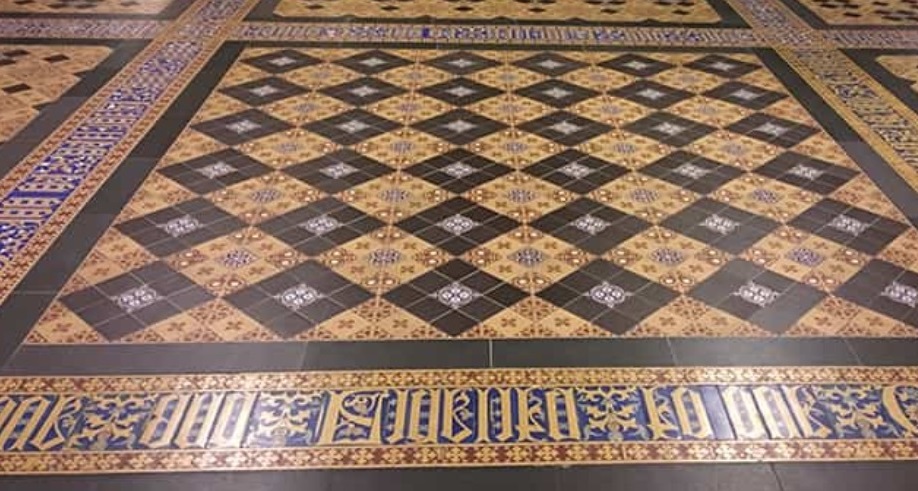
Previously, the dominant color scheme for ceramic tiles was earth-toned, primarily consisting of brown, beige, and white shades, but with the introduction of new glazing techniques, a diverse range of vibrant and expressive colors became available, broadening the options for designers and architects to incorporate tiles into their projects while bringing depth and character to spaces. These advancements in glazing technology also enabled the integration of intricate and detailed designs into the tiles, allowing for the creation of lifelike designs such as floral motifs, landscapes, and abstract art, which was not possible with traditional methods. Additionally, the enhanced durability of glazed tiles ensured that the vibrant colors and intricate designs remained vivid and intact over time, making them both aesthetically pleasing and practical for various applications, including floors, walls, and countertops. The innovation of these glass coating methods represented a crucial point in the development of ceramic tiles, giving architects, designers, and homeowners the chance to express their creativity and turn spaces into lively and personalized settings. These advancements continue to drive innovation in the ceramic tile industry, offering a continually expanding platform for artistic expression and design creativity.
The Digital Printing Era, which arose in the late 20th century and continues to influence the present, has revolutionized ceramic tile design by introducing digital printing technology, which has transformed the process of adorning ceramic tiles with intricate patterns and designs. Prior to the onset of digital printing technology, the limitations of analog methods constrained tile design, and achieving highly detailed and intricate patterns was both challenging and costly, often requiring manual processes or complex mechanical systems. However, with the advent of digital printing technology, ceramic tiles can now be transformed into canvases for the most intricate and elaborate designs imaginable due to the precision and capabilities of digital printers. Digital printers excel at reproducing intricate patterns with unparalleled precision, capturing even the finest details to create tiles that closely resemble the original design. This level of accuracy allows for the creation of tiles that emulate natural materials like wood, stone, or fabric with remarkable realism. Digital printing technology has unleashed a wave of creativity among designers and artists, providing virtually limitless possibilities for designing ceramic tiles, including custom patterns, intricate mosaics, and the reproduction of famous works of art. Clients can now work closely with designers to create unique tile designs tailored to their preferences and project requirements, a level of customization that was previously prohibitively expensive with traditional methods. Furthermore, digital printing is also an efficient and sustainable process, significantly reducing material waste compared to older methods, which is an increasingly important consideration in today’s environmentally conscious world.
The modern ceramic tile industry in the 21st century is positioned at the junction of innovation, sustainability, and global impact. This period signifies a notable evolution of the industry, steered by a dedication to environmental accountability, inventive creativity, and extensive influence across the world.
- Focus on Sustainability: Addressing escalating environmental apprehensions, the contemporary ceramic tile industry has prioritized sustainability. Manufacturers have embraced various eco-friendly measures to diminish their ecological footprint. This encompasses the utilization of recycled materials like post-consumer and postindustrial waste in tile production. Furthermore, energy-efficient kilns have been devised to curtail energy consumption and emissions during firing. Advanced manufacturing processes have significantly reduced water usage, thereby minimizing the industry’s impact on water resources.
- Diverse Tile Designs: An eminent aspect of the modern ceramic tile industry is its capability to replicate the aesthetics of diverse natural materials. Ceramic tiles have progressed to imitate the appearance and texture of natural stone, wood, and even metal. These advancements in design have provided architects and designers with a versatile array of options. Homeowners and businesses can now relish the visual allure of these materials without the associated maintenance challenges.
- Global Impact: The modern ceramic tile industry has broadened its presence to become a global force. Manufacturing centers have emerged worldwide, with prominent hubs in Europe, Asia, and the Americas. This global outreach ensures that high-quality ceramic tiles are accessible to customers globally, contributing to the industry’s extensive influence and market penetration.
- Customization and Innovation: In addition to replicating natural materials, modern ceramic tiles offer an extensive range of customizable options. Customers have the flexibility to tailor their tile selections to match their unique design visions, covering aspects such as size, shape, color, and finish. Furthermore, innovative digital printing technology allows for intricate patterns, textures, and even personalized designs on ceramic tiles, facilitating endless creative possibilities.
- Endurance and Longevity: Modern ceramic tiles continue to excel in terms of durability and longevity. They are well-suited for high-traffic areas and can endure wear and tear, making them a cost-effective long-term choice for flooring and wall coverings. This durability aligns with the industry’s sustainability focus by reducing the need for frequent replacements.
- Commitment to Sustainable Building: With the surge in sustainable building practices, ceramic tiles have become a preferred choice for architects and builders striving to achieve sustainable and energy-efficient designs. Their resistance to moisture, allergens, and easy maintenance aligns with the principles of healthy indoor environments.
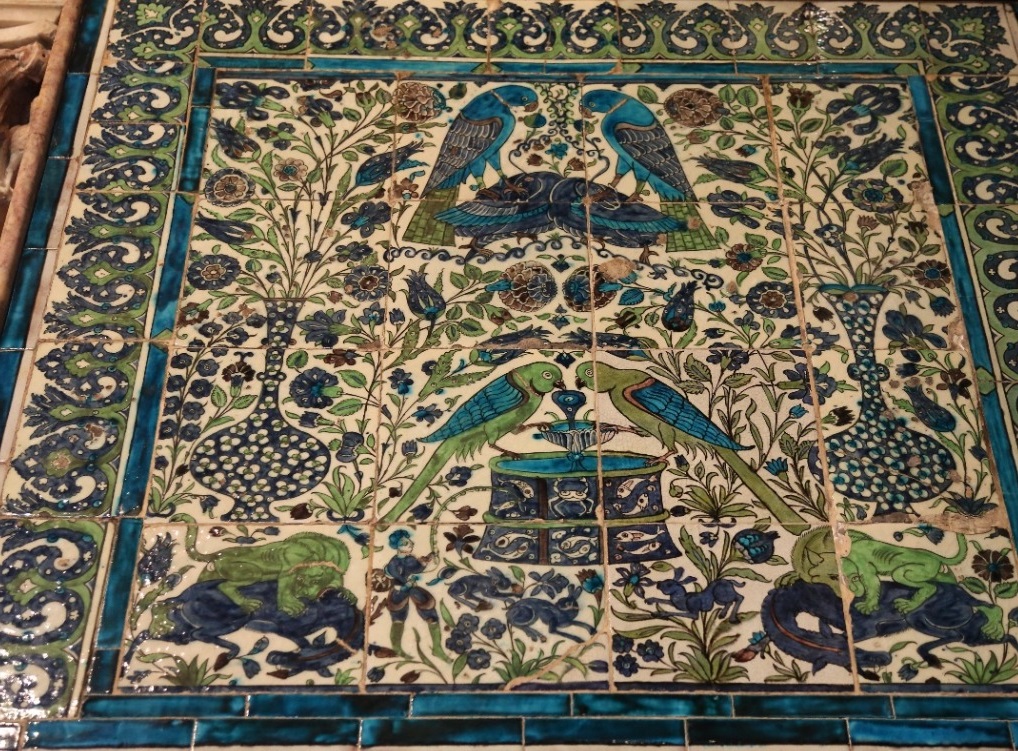
Conclusion
Accurate Reproduction: Digital printers demonstrate proficiency in replicating intricate patterns with unparalleled accuracy. They can capture even the minutest details, resulting in tiles that closely resemble the original design. This level of precision enables the creation of tiles that simulate natural materials like wood, stone, or fabric with exceptional realism.
Unbounded Creativity: Digital printing technology has unleashed a surge of creativity among designers and artists. The design possibilities for ceramic tiles are nearly endless. Artists can craft customized patterns, intricate mosaics, or even reproduce renowned works of art on tiles, opening up new opportunities for personalized and unique tile designs.
Cost-Effective Customization: Streamlined customization is a hallmark of the digital printing era. Clients can collaborate closely with designers to develop unique tile designs tailored to their preferences and project requirements. This level of personalization was frequently too costly using traditional techniques, but is now within reach of a wider range of customers.
Efficiency and Reduced Waste: Digital printing is an effective process that significantly reduces material waste compared to older methods. This focus on sustainability is becoming increasingly important in a world that is conscious of the environment.